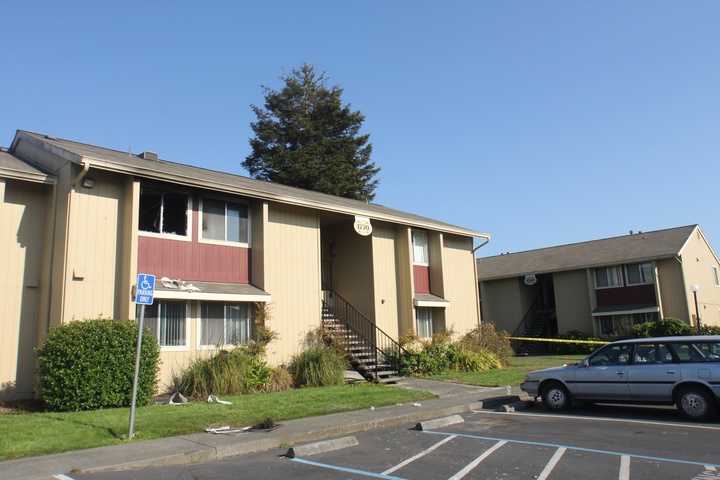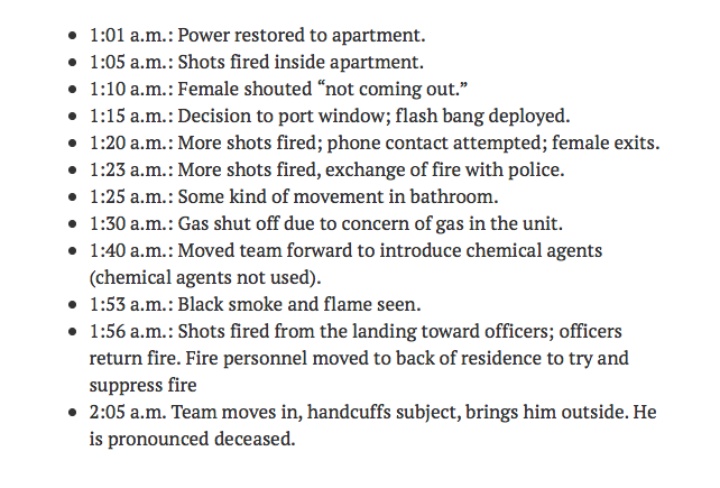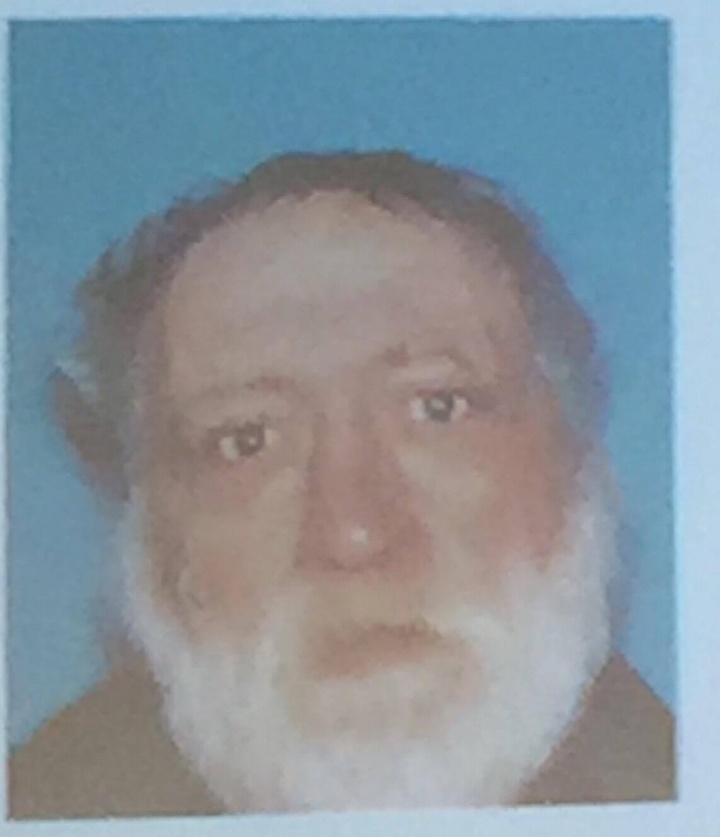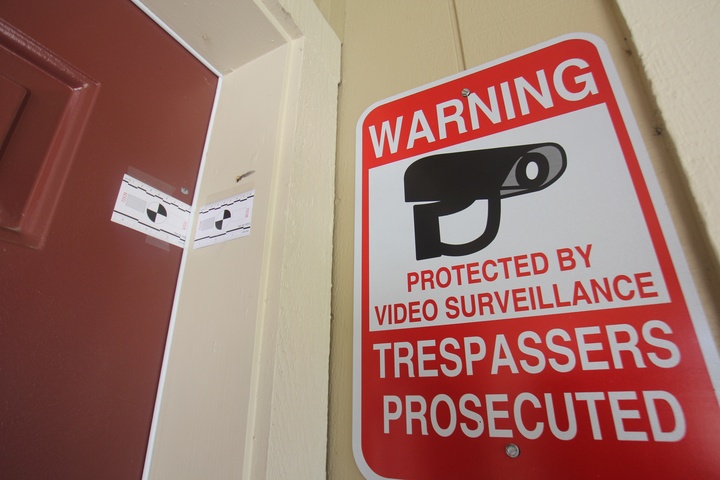Video filmed by McKinleyville residents Iska and Sincee.
As law enforcement officers exchanged gunfire with active shooter David Alan Fulton in McKinleyville on Aug. 17, Humboldt County logged in to watch the 16-hour standoff live on social media.
Hours of footage were uploaded to Facebook and Periscope by Redwood Creek Apartment residents who forwent evacuation in favor of streaming the day’s events from their living-room windows.
The videos captured several intense moments between Fulton and officers, including exchanges of gunfire, the deployment of a flash bang, smoke billowing from the shooter’s apartment, and ultimately the moment the 59-year-old was shot to death by authorities.

The scene of the shooting, the day after. Photos by John Ross Ferrara.
The videos drew an outpour of Internet speculation as to whether Fulton’s death was justifiable, and raised questions regarding the timeline of events originally given by deputies on the day of the shooting. Although misinformed, the speculation was not unfounded.
The grainy cellphone footage posted below, which the Outpost edited down from a much longer video, shows a number of curious moments, including what appear to be three final execution-style rounds fired at Fulton before deputies move in to make an arrest.
But differentiating what we see from what we know isn’t easy, and for many Internet commenters, neither is reserving judgement. The truth is often difficult to obtain, especially when it lies behind a veil of grainy pixels.
In an attempt to make sense of this footage, LoCO sat down with Undersheriff William Honsal to go over the videos one segment at a time. Follow along with the video above.

A summary of the HCSO’s timeline.
“All I’m doing is speculating based on what I know about the incident,” Honsal said as the footage began to play. “We’re still doing the investigation, and we’ll have an update in about 20 days.”
The video begins at roughly 1:50 a.m. Black smoke pours from Fulton’s window after a fire is lit inside the shooter’s residence. The gunman can then be heard firing his rifle two times.
Roughly a minute later, Fulton steps out into the foyer of the second-story apartment, gun in hand, and six deputies open fire, likely killing him in the process.
This is the first conflicting piece of evidence, as officers initially stated on scene that Fulton was killed during an exchange of gunfire:
But Honsal explained that the act of trading shots over any unspecified period of time can still be considered an exchange of gunfire, proving that people can interpret the same information in dramatically different ways.

David Alan Fulton.
“The suspect came out on the landing of his second story apartment armed with a rifle,” Honsal said. “Deputies felt threatened and fired at the suspect. But until I actually get to read their statements, I don’t know what they individually saw.”
Despite the lapse in time, Honsal said that officers were within their rights to shoot the armed suspect if they felt he posed a deadly threat.
“Deputies have rules of engagement, that they fire upon a suspect who is armed and poses a deadly threat to them or others,” Honsal said. “They have to articulate that’s why they fired each shot. It can’t be sympathy fire. It can’t be ‘Well, I fired because my deputy was firing in that direction so I did too.’ Each individual deputy has to make the decision for each trigger pull.”
After Fulton is shot, officers can be heard pleading with him to show his hands and surrender his weapon.
“I know that [at this moment] he’s laying on the platform landing and what was explained to me is that he still had the rifle in his hand,” Honsal said. “He wasn’t responding to commands.”
In real time, several minutes pass as officers continue to plead with the suspect and firefighters hose down the building. Then at the 3:21 mark in the video above, as everything seems to be quieting down, officers fire three more rounds at Fulton’s lifeless body. The rounds were not prompted by any other gunshots, and weren’t mentioned in any initial reports by the the Sheriff’s Office. However, this is once again a case of easily misinterpreted information.
“So what that was, is officers didn’t know if he was moving, or playing dead. So they shot bean bag rounds at his leg to see if he flinched,” Honsal said. “They had a spotlight on him and beanbag rounds impacted his leg. He didn’t move, and at that point in time, they felt it was safe to advance up there, see if he was hit, take him into custody and do life saving measures.”
Without context, these videos can appear damning to local law enforcement. And who knows? Perhaps they still are. The county’s Critical Incident Response Team is still investigating the shooting, and a full report hasn’t been published yet.

A bullet home form one of the original rounds fired at the Redwood Creek Apartments’ management office, which prompted the Sheriff’s Office response. Also, a warning sign for security cameras that don’t work. By John Ross Ferrara
In a group effort, Redwood Creek Apartment residents participated in what Honsal said was the first citizen-produced, real-time broadcast of a major Sheriff’s Office crime scene. And it turns out that the recordings are the only video evidence officers have of the standoff’s most crucial moments. Humboldt County deputies aren’t equipped with cameras. Mendocino County deputies are, but Honsal said their batteries died halfway through the standoff. And the apartment’s surveillance cameras, which were facing directly at the crime scene, aren’t operational.
Honsal told the Outpost that the HCSO demands accountability for its actions, and always wants as much information as possible. On Aug. 17, the residents of the apartment delivered.
But other citizen footage shot that day wasn’t as helpful, at least from a law enforcement perspective. A neighbor of the apartment complex sent his drone up to shoot aerial footage of the standoff in the middle of the day, as it was at its peak. He uploaded the video to YouTube shortly thereafter:
The Outpost published this video for a couple of minutes during the height of the standoff before reconsidering and taking it down. The fear was that the shooter may have been looking at news coverage in the middle of the standoff, and that the video would have given him information about police position and tactics. Though Fulton was not a trained sniper or a criminal mastermind, Honsal confirmed that the drone flying around the scene that day was a concern to police for that reason.
Similar concerns prompted the provider of the Internet scanner stream for the north part of the county — the “North” feed on our “Scanner Traffic Indicates” page — to remove all police channels from the scanner. In an email sent to followers, the person running the feed, who goes by “Just-In” on the Outpost scanner pages, said that he had discovered that other websites and/or social media pages had republished “false or confidential” information about major police incidents.
“I’ve been providing a scanner feed over several web services since 2005 without a single complaint from any agency … though with a couple questions or requests we’ve resolved satisfactorily, and I intend to keep it that way,” the email reads. “Anyway, effective today, with Broadcastify’s assistance, I have removed all law enforcement channels from my scanner stream.”
It’s hardly news that social media is affecting law enforcement in all kinds of ways, and in the Sutter Road incident it was both a help and a hindrance. The case also serves as a good lesson for consumers of tweets and livestreams and the like: What you see isn’t always what you know, and sometimes a bullet is just a beanbag.
###
PREVIOUSLY:
CLICK TO MANAGE